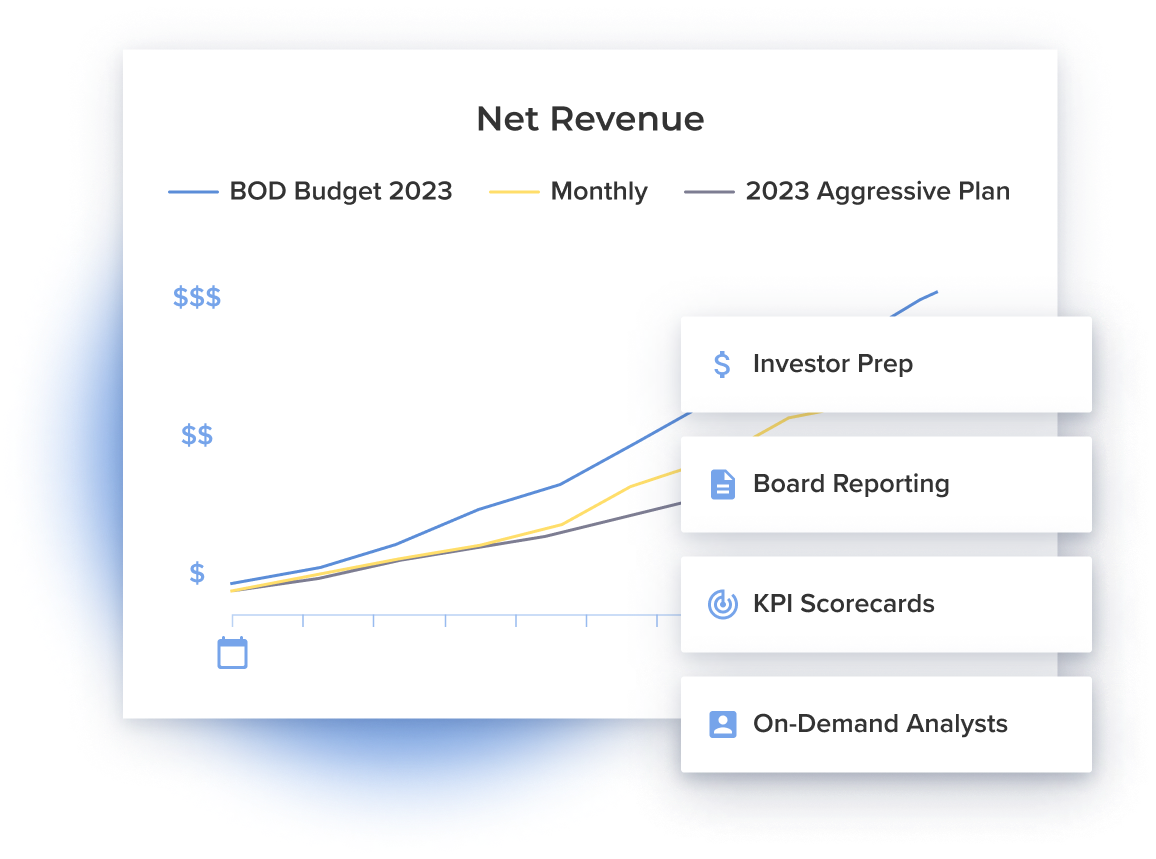Inflation's Impact on Margins
%20Cropped.jpg)
Inflation has been running rampant so let’s look at how it is impacting DTC businesses.

Above is Allbird’s most recent Consolidated Statements of Operations and Comprehensive Loss, which we are using just to remind everyone of what a P&L can look like. Let’s step down that P&L and call out some of the lines most impacted by inflation.
Net Revenue (Sales)
Inflation may lead consumers to act more frugally, spending on necessities and reducing discretionary buying. While we haven’t seen this impact yet and consumer spending is currently 18% higher than two years prior, that is driven by individuals dipping into savings while pandemic restrictions ease, according to McKinsey. So, let’s hope for the best, but model the worst. What happens when consumers no longer want to dip into savings to buy things?
What to do
- Model decreased repeat purchase rates, lower AOV’s and lower conversions from new customers.
- Make sure to model the impacts of slower inventory turns on working capital, cash, and future buying.
- Model increasing your prices.
COGS
Fuel prices have increased significantly, with the recent volatility pushing UPS to join FedEx in recalibrating their fuel surcharges to a lag time of one week, rather than two. The Cowen/AFS LTL Freight Index reports that even though the average LTL shipment weight lies below the 2018 baseline, fuel has been a significant driver in increasing average LTL Cost Per Shipment’s growth by 0.9% Quarter-Over-Quarter, and analysts expect LTL rates to only increase from here.
Fuel price increases are also impacting your suppliers as their costs are increasing. The price of Brent oil, the benchmark used to monitor the pricing of over three-quarters of the world’s oil used for global shipping, is currently at $119.57, up 42% from six months ago when prices were at $69.88.
Morgan Stanley’s energy team is monitoring these changes, and analysts predict that Brent oil prices will reach “$130 in the third quarter of this year.”
What to do
- Model increases in per-unit costs and inbound freight costs
Ad spend
As noted above, if consumers buy less, conversion rates are likely to be lower. Obviously, lower conversion rates mean higher CAC’s.
What to do
- Model impact of lower conversions and higher CAC’s on ad budgets, cash, and inventory.
Fulfillment
Inflation will impact fulfillment in multiple ways including increased fuel costs for shipping and increased labor costs. UPS and FedEx have both implemented fuel surcharges, raising express parcel by 129% and ground parcel fuel surcharges by 89% compared to October last year.
What to do
- Model increases in shipping costs, per order costs, and base 3PL contracts
OpEx
For most DTC brands, headcount or payroll is the majority of OpEx. Inflation is already impacting wages.
What to do
- Model increases in wages for new and current hires
- Model increases in benefits costs for all headcount
Interest Costs (Capital Costs)
As the Fed fights inflation, interest rates will rise. The companies giving you money have to borrow that money so as their cost of capital increases, they will pass those increases on to you. Even if it’s MCA without an ‘interest rate’ your cost of taking their money will increase. Somewhat related to inflation, borrowing will not only get more expensive, it will get more difficult. This means options with less capital and worse terms.
What to do
- Model lower borrowing amounts. The deals you got last year or even 6 months ago are likely gone. So model lower borrowing amounts
- Model increased borrowing costs. This is especially important for the fintech/new lending products where terms can be confusing and structures are new. As cost of capital increases and your growth and profits per customer decrease, some borrowing deals may be uneconomical so you want to understand where your threshold is.
Challenges Bring Opportunities
The public market’s perception of what is valuable is changing rapidly. Peter Oppenheimer, Chief Global Equity Strategist at Goldman Sachs, explains that “Not so long ago, investors were enamored with fast-growing companies that used software to send a ride or groceries to your door at the push of a button, even if the firm’s profits were far off in the horizon. But these days, healthy margins and companies that make real, physical stuff are back in focus.”
In the old market, DTC was out of favor because investors realized it didn’t look or act like tech stocks. DTC was far more capital intensive and lower margin with harder growth. But as investors seek durable margins with provable demand, DTC has a chance to shine again.
With this understanding, it becomes clear just how widespread these problems are. Inflation has been a key topic on earnings calls of late, and by Q4 2021, 71% of S&P 500 companies had mentioned inflation as a significant concern on their earnings calls, in addition to related topics.
Is your current financial modeling capable of responding to these challenges and stressors? We can help! Reach out here to book a demo and see what Bainbridge can do for you.
Subscribe to our newsletter

Ready to see what you can do with Drivepoint?
Learn how other consumer and CPG brands are driving margin and cashflow with Drivepoint







